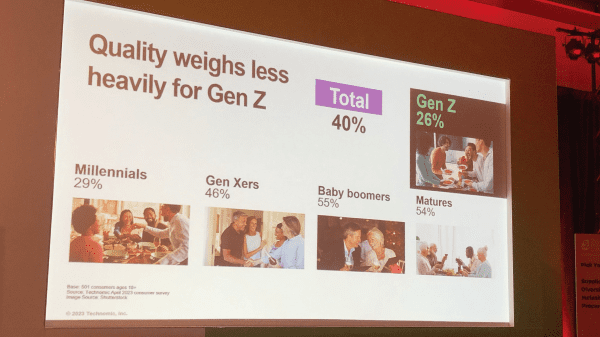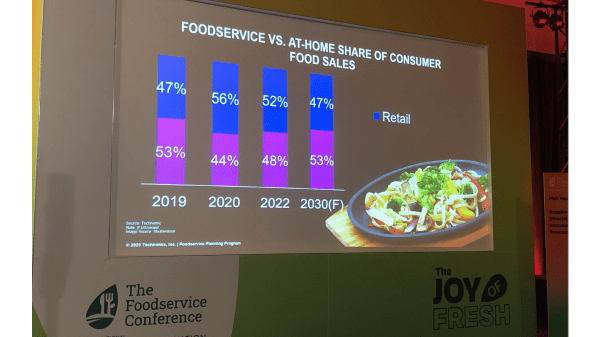MONTEREY, CA — The foodservice landscape will look different in 2030 as Generation Z commands more influence and market share.
At the International Fresh Produce Association BB #:378962 Foodservice Conference July 28, Joe Pawlak of Technomic gave a handful of predictions for what the restaurant business will look like in seven years.
For one, he says foodservice will regain its overall share of food dollars spent, which it had in 2019, before the global pandemic. In 2019, foodservice represented 53 percent of food sales to retail’s 47 percent.
By 2020, retail attained a 56-44 split, as restaurants suffered from pandemic restrictions. By 2022, the ratio had changed to 52-48 retail, but Pawlak says it will be back to 53-47 foodservice by 2030.
Many of the changes expected by 2030 will be the result of the maturing of Gen Z, which Pawlak defined as Americans born from 1993 to 2004. However, a more common grouping sees that sector as being born from 1997-2012, meaning they are 11-26 years old, and will be 18-33 in 2030.
Pawlak said Gen Z’s spending power will double by 2030, and through the generations, those age 30-40 are always the heaviest foodservice users.


Foodservice now sees trends polarizing between convenience and experience, he said. Convenience has to deliver on speed, proximity, and seamless process, while a restaurant experience has to deliver something unique, engaging, and with great hospitality.
Gen Z and Millennials’ preferences expand this gap as research shows they value quality less and convenience more than other generations, Pawlak said.
At the operator level, Pawlak said rising food costs are their No.1 concern, but labor makes up three of the next four top concerns.
For example, he said, California has a proposal going before voters in 2024 which would set the minimum wage for fast food workers at $22 per hour, which the rest of the restaurant industry would be forced to compete with.
Pawlak said this is one of the issues giving robotics a boost, but it’s still far from being commonplace.
Research shows that 52 percent of consumers prefer to order through wait staff, but only 26 percent of 18–24-year-olds say they do.
He said the labor problems now and, in the future, will raise demand for fresh produce to be delivered to restaurants in a prepared state.
Another trend he noted is rising consumer demand for healthier food, and that’s a great opportunity for fresh produce.
Chefs have said through the years that labeling menu items as “healthy” has been the kiss of death, but pointing out specific health benefits of menu items, such as fruits and vegetables do not have that effect, Pawlak said.



